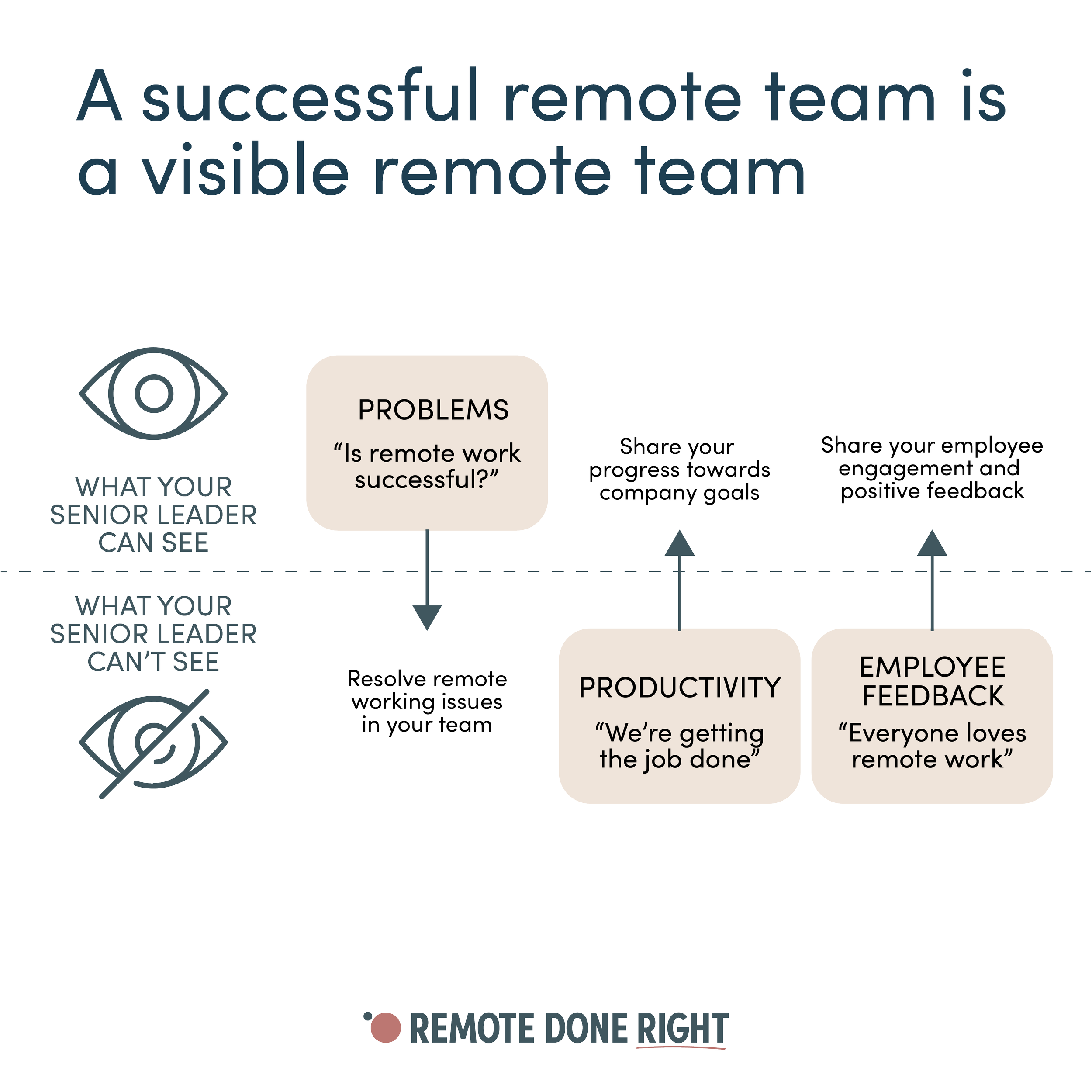Don’t ask how many people are in the office. Ask is the job getting done.
If you lead a team that’s successfully working from home, but you’re facing the scrutiny of senior leaders who want everyone back in the office, make sure you’re giving them evidence that the work is getting done, your people are happier and you have the capacity to resolve issues.
Stop wondering what your team is doing and start building a remote leadership system that works. Download our free checklist to get started.
Why it matters
Maintaining remote work means getting senior leaders on board. If you keep them in the dark about your successes, they don’t have all the information they need to make decisions about the future of remote work.
Take action
Set clear goals and performance indicators
In a remote work environment, it's crucial to establish a clear direction for your team.
Work with your leader to ensure you agree on goals and KPIs
Align goals with the objectives of your organisation
Report regularly
Promoting your team's accomplishments is key when working remotely.
Highlight your team’s achievements, progress towards goals and overall productivity at every opportunity
Focus on metrics such as project completion rates, quality of work and customer satisfaction
Use work management tools to share progress
Technology plays a vital role in managing remote teams effectively.
Tools like Jira, Trello or Asana can provide visibility of team progress and track work progress and deliverables
Establish expectations for use and refer to these tools regularly
Gather and share employee feedback
Understanding your team's perspective on flexible work arrangements is invaluable.
Regularly gather feedback from your team about the flexible work arrangements and share with your leaders
Highlight how these arrangements have positively impacted your team’s productivity and morale
Focus on individual performance
Regular evaluations remain critical in a remote setting.
Conduct regular reviews to make sure individuals are progressing towards their goals
Include 360 degree reviews to give colleagues an opportunity to voice concerns or give recognition to their peers
Demonstrate success through benchmarks
Comparing your team's performance provides context for productivity levels.
Compare your team performance with that of other teams, or, if it’s available, performance prior to moving to remote work
Communicate regularly and transparently
Open and frequent communication is the backbone of successful remote work.
Be open about challenges and how you are addressing them
Regularly update your leader on progress and successes
Join our community
Sign up to our newsletter and join our community of people committed to making remote work fair and productive.

